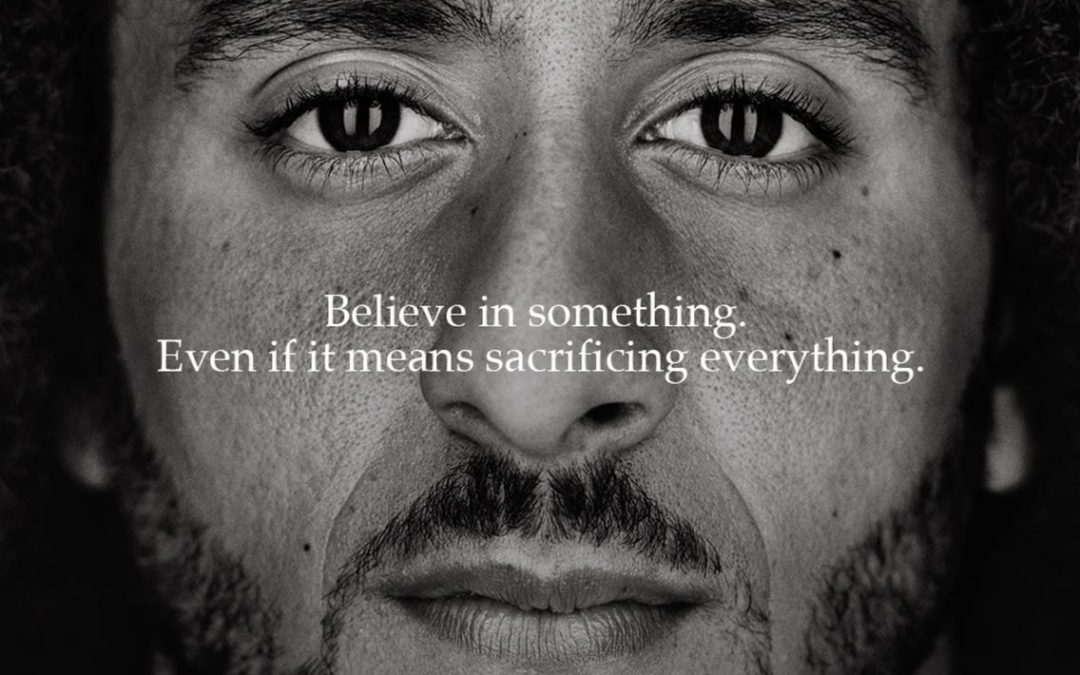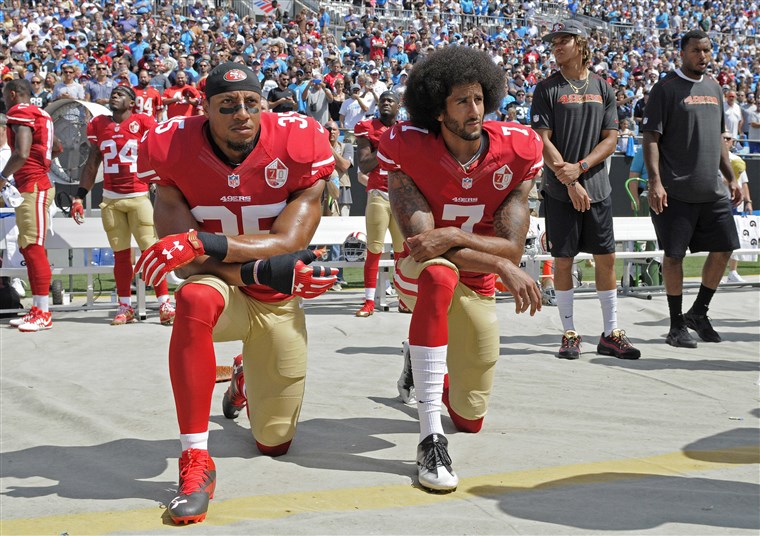Originally published on linkedin.com/pulse/crusading-brand-message-kevin-kazuhito-naruse
You might remember the Nike advertisement featuring former NFL player Colin Kaepernick.
You might be wondering what motivated Nike. Maybe it was a calculated business move?
Or maybe Nike was taking a moral stand, despite the risk. We will never know the whole answer.
Either way, it was a risky move. As we remember, the ad provoked a huge public reaction, a backlash, even, in the media. As said by Manish Dudhareija, founder and president of E2M Solutions Inc.:
“Political leaders and spectators responded in force. Some boycotted the NFL altogether, and many of them haven’t returned. … The league’s ratings took a dive in that first season when Kaepernick was actively protesting. Later, as Nike released its anniversary campaign, many industry watchers predicted that Nike’s stock could see a similar effect.”
No doubt it was an emotional hot button issue for many people. But the population (customer segment) they were targeting was mainly millennials, and focus groups showed that more people in that age category would resonate with it than they would be alienated by it.
Nike initially took a tumble on its stock value but recovered. In fact, Nike’s stock not only recovered, but a week after the ad aired, it actually surpassed its original value before the ad had aired in the first place. Dudhareija continued:
“As it turns out, Nike’s stock reached an all-time high by mid-September. The athletics-gear company also saw hefty gains in sales revenue throughout the month. The marketing campaign reinvigorated the controversy around Kaepernick’s protest and the issues behind it.”
The takeaway for marketers?
Don’t Be Afraid to Take a Stand
Take a position and embrace it. If you can tie the message into an official company social media post (just like Nike did in its ad), it’s strategic.
Doing so will help you build the brand symbolizing your company’s core values.
You could say that Nike was just being opportunistic; they didn’t necessarily have to agree with the message at all, they knew this from research before the ad aired so they already had good reason to make this move. It was a calculated risk. You would have to admit, though, that the idea was clever, and some may say it was brilliant.
All people have a specific value system to guide their decisions. What we value guides our behavior, even what brands we purchase from.
‘Believe in something, even if it means sacrificing everything‘:
The slogan was aimed to associate Nike’s image with people that are not afraid to speak up, to be vulnerable, yet at the same time bold, fearless, “truly themselves.” Fearlessly authentic.
We generally do business with people who share similar values. In some ways, it goes right to the core of it because a mental association has been made between the thing you value and the brand. That, with strong emotional imprinting due to the controversy surrounding the topic, leads to the brand being made larger, more like an actual person who, like the brand, has a mind of their own and their own set of values and beliefs.
 Give Your Brand “Attitude”
Give Your Brand “Attitude”
You don’t have to take a huge risk and make a political statement. Perhaps a lot of your work centers around homeless community outreach or housing support. You can take a position on homelessness and its link to suicide, tie it into the homelessness problem in Hollywood, and offer a link to an article that further expands on that point.
Due to COVID-19, the world is awash in a rising pandemic of mental illness, and existing social issues caused by inequality and other social injustices are getting amplified.
Partly but not only for this reason, mental health has been cast more into the public spotlight. Many people have strong sentiments about suicide, how people with mental health issues are often victims of social injustice, not the perpetrators, or about the way mental health is portrayed in the media.
That’s a pretty safe topic to take a stand on, right?
Taking a position on certain issues may alienate some people and galvanize others. Generally, taking a political stand can be risky, so be sure to thoroughly research your audience to know how they will likely respond before posting such content.
Regardless of the (positive or negative) attention, the ad worked. It forever tied the image of a person and a personality to a brand symbol. It made Nike more memorable.
[Related: 16 Brands Doing Corporate Social Responsibility Succesfully]
What Kinds of Positions Should You Take?
The best opportunity for this is always trending content and one that is relevant to the audience.
Taking positions doesn’t necessarily have to be related to the content you are posting. It can be unrelated. It certainly doesn’t have to be political.
A recent tragic event would be a perfect example of a situation to interrupt normal programming and perhaps make this the topic of your next post.
Not everyone might feel comfortable going into the issue of gun rights or gun control when posting content in the wake of a mass shooting, but might be arguing about the way mental illness is overemphasized in explaining mass shootings in general. Or let’s say the news is awash in the report of a celebrity suicide, and it is hitting the news headlines right now nonstop.
Let’s say you are a behavioral health agency.
What values does your company hold?
What is your company’s take on these current events?
Do it in the caption of your post.
Do it in the comments.
Did you ever consider posting something on Facebook or Instagram, then posting one or two comments right after on your own post?
Comment on your posts.
This is the idea, and a perfect place to further add your own commentary or take on the issue.
Or further info.
Or links.
Comment on other people’s posts.
Engage outside of the post when commenting on both your posts and replying to the people in your audience segment.
Let’s say you were at a cocktail party, and you just arrived in a roomful of people you’ve never met. What’s the first thing you would do?
The first thing to do is to listen, scan the room, take in the scenery. You begin by soliciting information.
What are people talking about?
What tone are they using?
By first listening to the conversation, you will eventually find a place where you can find an opening. This is where you can seamlessly join, and become a part of, that conversation.
In other words, the “talking” is preceded by “listening”.
Here’s another way:
Reply to a question in a comment with an answer.
No form of a comment will compel a response than addressing someone directly with a question.
When someone asks a question in a group, one of the best opening lines is an answer to a question you know how to respond to, provided your response adds value to the conversation.
Now, as a newcomer in this group conversation, people are a lot likelier now to notice your next comment.
The Final Takeaway
A brand is more than a two-dimensional graphic logo and name. It is multi-dimensional. Your “brand” is not only who you are, where you are, what you do, and the company logo.
If your brand actually believes in something or is crusading for a cause, even if it looks to be for another reason, it literally acquires a new dimension.
With the “personality” and “attitude” added, the brand becomes more humanlike.
Research shows that the more humanlike attributes a brand exhibits, the more likely the brand is to elicit emotions of trust.
The marketer is looking for people who also believe what you believe, and value what you also value. They will associate your brand with more gravitas, credibility, and authenticity.



